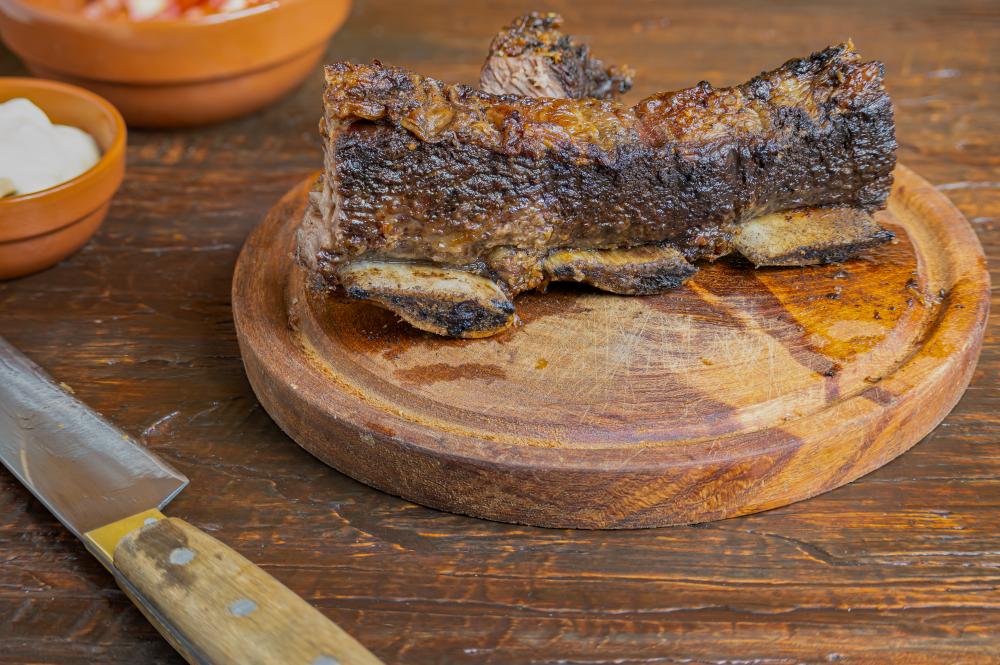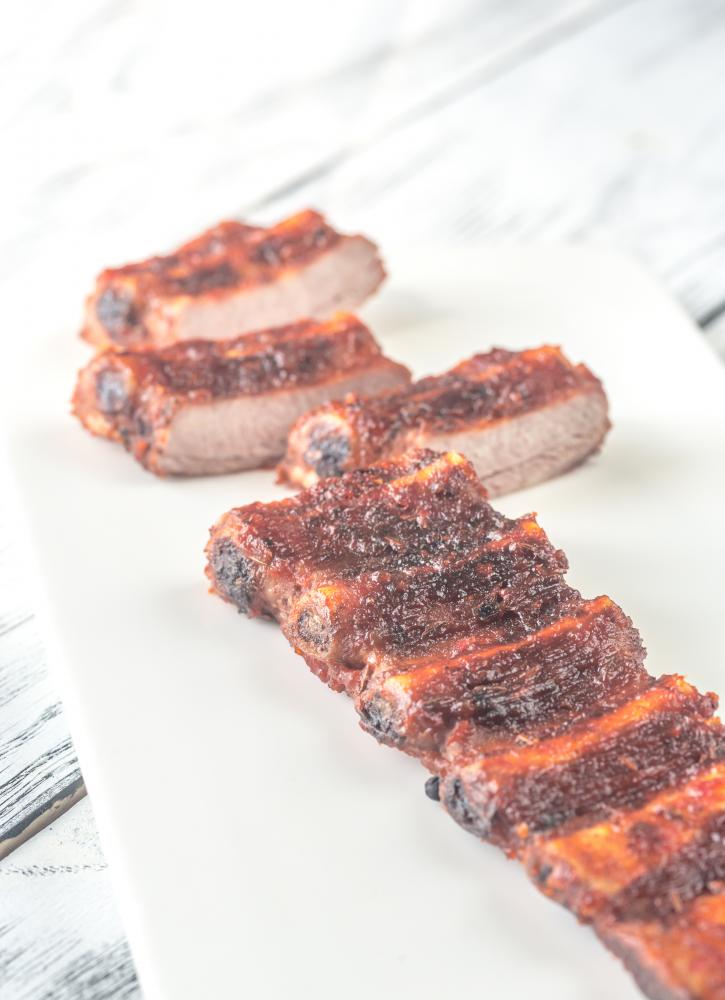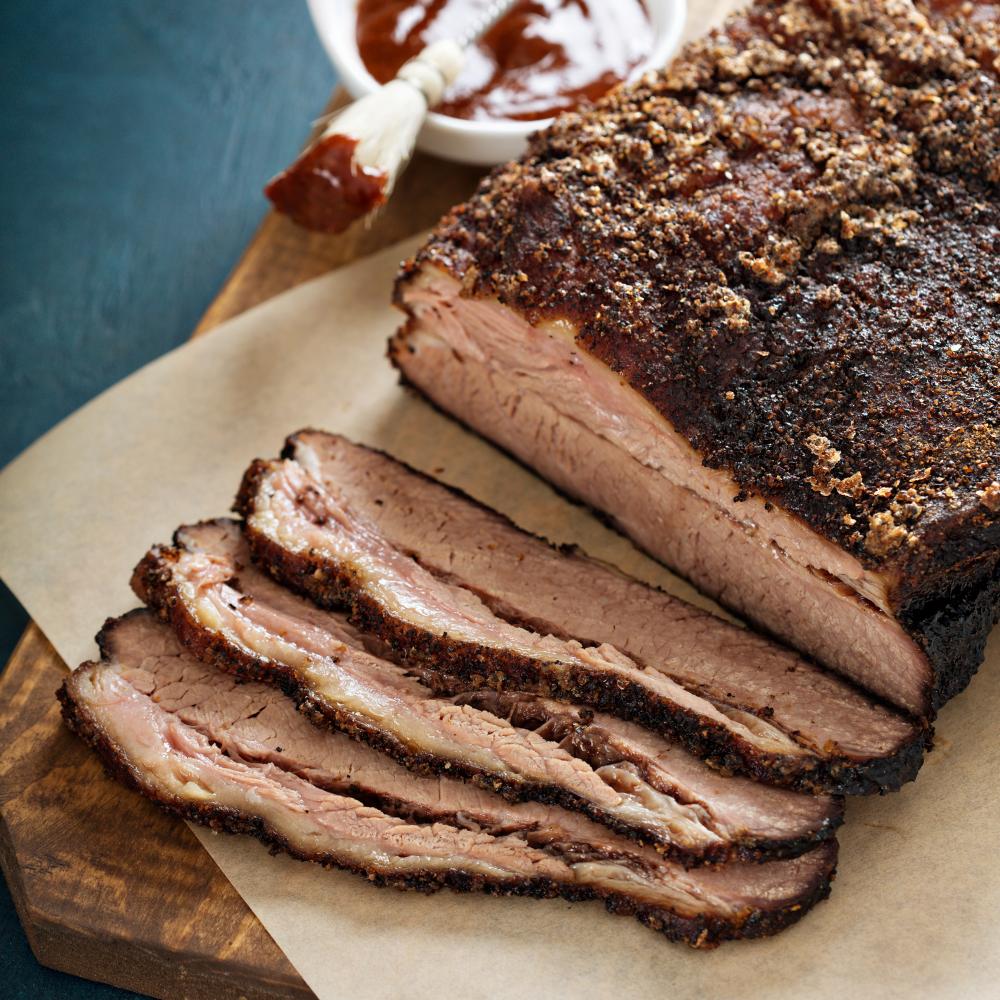
Understanding Brisket Cooking
At Brisket Pro, we often encounter the question: Does brisket get more tender the longer you cook it? The simple answer is yes, but with a caveat. Brisket, known for its tough muscle fibers and connective tissues, requires a low and slow cooking process to achieve that mouthwatering tenderness we all crave. The magic happens when the collagen within these tough connective tissues melts into gelatin at low temperatures, transforming the meat into a tender delight.
However, it’s crucial to understand the balance required in this process. Cooking a brisket beyond its optimal point can lead to dry, less appealing textures. The key is knowing when it’s just right, which can be a delicate dance of time, temperature, and technique.
The Role of Temperature
Temperature plays a pivotal role in breaking down the connective tissues within the brisket. Cooking at a consistent low temperature, usually between 225 to 250 degrees Fahrenheit, allows the brisket to gradually reach the ideal internal temperature without drying out. This slow process is what leads to a tender and juicy brisket.
One common misconception is that cranking up the heat will speed up the process while yielding the same results. This couldn’t be further from the truth. High heat can cause the brisket to seize and toughen, overshadowing any potential for a tender outcome.
Marvels of Marbling
Another critical factor in achieving a tender brisket is the selection of the cut. A piece with good marbling, meaning streaks of fat running through the muscle, will invariably lead to a juicier and more flavorful result. As we cook the brisket, this fat slowly renders down, mingling with the collagen to moisten and tenderize the meat.
Choosing a brisket with a higher grade of marbling not only enhances flavor but ensures that the brisket remains tender throughout the cooking process, reinforcing the principle that brisket does get more tender the longer you cook it, given that it’s cooked correctly.
Mistakes to Avoid
- Overcooking – While it’s true that brisket becomes more tender the longer it cooks, there is a fine line where it starts to become dry and tough again. It’s essential to monitor the brisket’s internal temperature closely.
- Poor Quality Meat – Selecting a brisket cut with insufficient marbling can doom your efforts from the start, as it lacks the fat needed to tenderize the meat during cooking.
- Ignoring the Stall – Brisket often experiences a temperature “stall” around 150-160 degrees Fahrenheit due to evaporative cooling. Wrapping the brisket in foil or butcher paper can help overcome the stall and prevent the brisket from drying out.
Personal Experience
In my journey with brisket, I’ve found that patience is your best ally. The anticipation can be overwhelming, especially when the aromas start filling the air, but giving it time to slowly come to temperature makes all the difference. I recommend investing in a reliable meat thermometer to take the guesswork out of the equation. My best briskets have always been those where I allowed the internal temperature to guide my cooking, rather than the clock.
The joy of slicing into a perfectly cooked brisket, where the slices are so tender they almost fall apart, is unmatched. It’s a reward for the patience and care put into the cooking process. And to answer the perennial question, does brisket get more tender the longer you cook it? Yes, it absolutely does, with the right approach and attention to detail.
Remember, each brisket is a new adventure, and even the most experienced pitmasters learn something new with every cook. Embrace the process, learn from each experience, and you’ll find that brisket mastery is within reach.

Essential Preparation for Cooking Brisket in Oven
At Brisket Pro, we understand that cooking brisket in the oven can seem daunting, especially if you’re accustomed to the smoker. However, this method can yield succulent results that rival traditional BBQ when done correctly. The key to mastering how to cook brisket in the oven lies in the preparation phase, which sets the foundation for a successful cook.
Choosing the Right Cut:
Selecting the right brisket cut is crucial. Look for a piece with good marbling and a thick fat cap. The marbling enhances flavor, while the fat cap will melt during cooking, keeping the meat moist. A full packer brisket, which includes both the flat and the point, is ideal for oven cooking as it offers a rich mix of textures and flavors.
Seasoning:
Seasoning your brisket is more than just adding flavor; it’s about creating a delectable crust, or bark, that brisket enthusiasts cherish. A simple rub of salt, black pepper, garlic powder, and onion powder can be transformative. For those who like more complexity, adding smoked paprika or a touch of brown sugar to the rub can introduce new flavor dimensions.
The Cooking Process: How To Cook Brisket in Oven
How to cook brisket in the oven involves patience and a willingness to let slow heat work its magic. The process is straightforward, but each step is essential to achieving that tender, flavorful brisket we all love.
Initial High Heat:
Starting your brisket at a higher temperature for a short period helps in forming a crust. Preheat your oven to 325°F and cook your brisket, fat side up, for about an hour. This initial blast of heat helps to render the fat, which begins the process of breaking down the connective tissue.
Low and Slow:
After the initial hour, reduce the oven temperature to 275°F and continue to cook the brisket, tightly covered with foil, for several more hours. This low and slow approach is key to how to cook brisket in the oven, allowing the connective tissues to gently break down without overcooking the meat.
Resting:
Once cooked, let your brisket rest covered for at least an hour before slicing. This step is crucial; it allows the juices to redistribute throughout the meat, ensuring that every bite is juicy and flavorful. Remember, patience pays off immensely when it comes to brisket.
Finishing Touches and Serving
After resting, it’s time to slice and serve your oven-cooked brisket. Here at Brisket Pro, we believe that how you slice the brisket can make a monumental difference in the texture and enjoyment of the meat.
Slicing Against the Grain: Slice your brisket against the grain to ensure maximum tenderness. This means cutting perpendicular to the muscle fibers, which makes the brisket easier to chew.
Serving Suggestions: Brisket pairs wonderfully with a variety of sides. Classic options include creamy coleslaw, baked beans, and roasted vegetables. Don’t forget to drizzle some of the cooking juices over the sliced brisket for an extra layer of flavor.
- Remember, the journey of how to cook brisket in the oven is as rewarding as the destination. By following these steps and adding your personal touch, you’ll serve a dish that’s sure to impress.
- Experiment with different rubs and cooking times to find your perfect brisket recipe. The beauty of cooking is in the variation, and every brisket offers a new opportunity to refine your skills.
The Art of Brisket
At Brisket Pro, our passion and expertise lie in the heart of smoking and grilling, particularly when it comes to mastering the art of how to make brisket tender in smoker. The journey to achieving that melt-in-your-mouth tenderness, paired with the perfect smoke ring, is both a science and an art form. It’s a process that demands patience, precision, and a bit of personal flair.
Selecting the Right Cut
Understanding the brisket anatomy is the first step on the road to perfection. Choosing the right cut of brisket is crucial; the choice between a flat cut and a point cut can greatly impact the outcome. The best results in how to make brisket tender in smoker come from a whole packer brisket, which includes both the point and flat. This ensures a blend of textures and flavors. Always look for good marbling, as the fat renders down during smoking, naturally basting the meat and contributing to its succulence and flavor.
Prep and Seasoning
Trimming:
Proper preparation is key. Trimming the brisket not only shapes it for even cooking but removing excess fat ensures the smoke penetrates the meat effectively. However, leave a thin layer of fat to keep the brisket moist throughout the smoking process. This step cannot be overstated; it’s the groundwork for how to make brisket tender in smoker.
Seasoning:
When it comes to seasoning, simplicity often reigns supreme. A rub of coarse salt and black pepper enhances the natural flavors of the brisket without overwhelming it. Some enthusiasts add garlic powder or their signature blend of spices for an extra layer of flavor. The seasoning should complement the brisket, not mask its rich, meaty essence.
Smoking Process
Smoking brisket is where patience truly becomes a virtue. Maintaining a consistent low temperature (225°F is the gold standard) ensures the connective tissues in the brisket break down into gelatin, resulting in that sought-after tenderness. The type of wood used for smoking also plays a significant role. Woods like oak or hickory provide a robust smoke flavor, while fruit woods offer a milder, sweeter profile.
- Wrapping: Wrapping the brisket in butcher paper or foil (known as the Texas crutch) during the stall phase (when internal temperature plateaus) helps to push through this period without drying out the meat.
- Resting: Perhaps the most crucial, yet often overlooked step in how to make brisket tender in smoker is the rest period. Allowing the brisket to rest for at least an hour after smoking lets the juices redistribute throughout the meat, ensuring every bite is moist and flavorful.
At Brisket Pro, we’ve ridden the highs and lows of brisket smoking, from lean cuts that challenge our moisture-retaining methods, to marbled beauties that practically season themselves in the smoker. Each brisket tells its own story through its texture, taste, and tenderness, and we’re here to help you write yours. For those embarking on their journey of discovery in how to make brisket tender in smoker, remember, the journey is just as savory as the destination.

Can Cooking Brisket Longer Make It More Tender?
Absolutely, and at Brisket Pro, we’re all about perfecting this process. The principle behind cooking brisket is centered on the low and slow method. This approach allows the tough connective tissues and collagen within the brisket to melt and transform into gelatin, offering that tender, melt-in-your-mouth texture that we all crave. However, it’s a nuanced art. Cooking the brisket just right requires a balanced dance of time, temperature, and technique. It’s not just about leaving it on the heat for longer but maintaining a consistent low temperature to avoid drying out the meat. A dedicated pitmaster will tell you, patience rewarded with precision is the secret to a tender brisket. Have you ever tried monitoring meat temperature closely to achieve that perfect tenderness?
Does Overcooking Brisket Make It Tough?
Indeed, it does. This is one of those fine lines in brisket cooking that we often discuss at Brisket Pro. While the goal is to cook the brisket long enough for the connective tissues to break down, there’s a tipping point where too much cooking will begin to dry out the meat. Once the moisture evaporates, the brisket can become tough and chewy, a far cry from the tender delight we aim for. Constant monitoring and understanding the brisket’s internal temperature are crucial to avoid crossing from tender to tough. Remember, a juicy brisket is a balance of the right cooking time and temperature. Ever had a brisket gone too dry, and how did you rescue it?
Why Is My Brisket Still Tough After 12 Hours?
That’s a common query, and the answer often lies in the complexity of brisket itself. Even after 12 hours, a brisket might still feel tough because it hasn’t reached the optimal internal temperature needed for the collagen to break down fully into gelatin. Brisket is a marathon, not a sprint, and sometimes it requires additional cooking beyond the anticipated time frame, especially if the heat isn’t consistent. Also, the quality of the brisket plays a significant role. A cut with less marbling might not tenderize as well as one with more fat content. At Brisket Pro, we emphasize the importance of not just the length of cooking but maintaining the right conditions throughout. How consistent was your temperature during those 12 hours?
How Do You Soften a Tough Brisket?
A tough brisket isn’t the end of the world. There are a few tricks to salvage it, and moisture is your best friend here. If you find your brisket tough post-cook, consider wrapping it in foil with a bit of broth or juice and returning it to the oven or smoker at a low temperature. This can help to reintroduce moisture and gently further the cooking process, allowing the connective tissues more time to break down. Another method is to slice the brisket and then simmer the slices in a sauce or gravy. This can tenderize the meat fibers without drying it out further. At Brisket Pro, we’ve all had our share of brisket challenges, and it’s these moments that refine our techniques. Have you ever had to rescue a brisket, and what methods worked for you?
Resources
- USDA Food Safety and Inspection Service – The USDA offers valuable information on food safety, including guidelines on safe cooking temperatures for various meats like brisket.
- Beef. It’s What’s For Dinner – This website provides resources on beef cuts, cooking techniques, and recipes, including tips on selecting the right brisket cut.
- Purdue Extension – Purdue Extension offers research-based information on food and nutrition, including guides on meat selection, preparation, and cooking methods.
